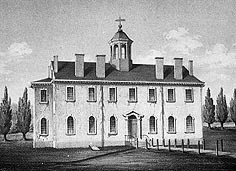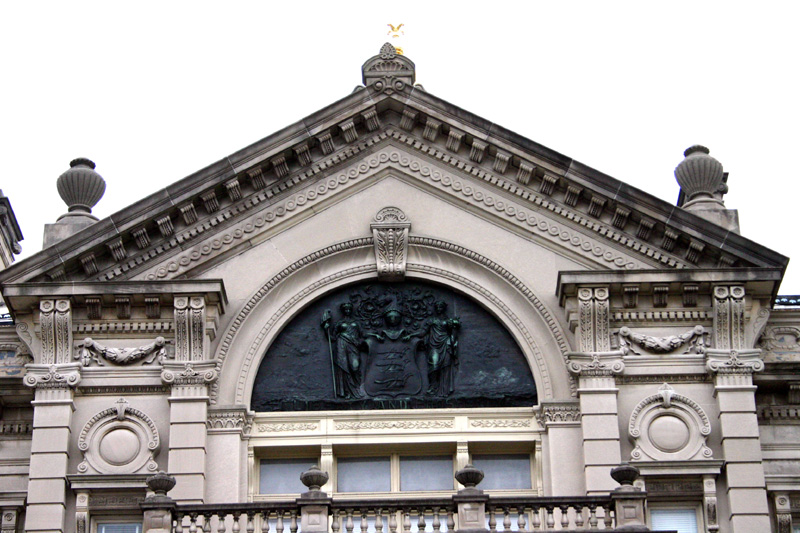This Week in History: A Walk Through State House History

When taking a look at Trenton’s iconic skyline, most people’s eyes will immediately be drawn to the iconic golden dome of New Jersey’s State House. The ornate design and regal exterior makes this spot a must-see for any visitor to the Capital City. Within the walls of the State House lies an abundance of history; from the construction of the building to the legislation passed in its chambers, what happens in these hallowed halls has a profound impact on the development and progress of the Garden State at large. Today, let’s take a look inside and explore the fascinating history of the New Jersey State House.
As the country’s second oldest State House still in use, New Jersey’s Capitol dates as far back as 1792. For just 250 British pounds, the 3.75 acre plot was purchased and the work began in constructing the heart of New Jersey governance. The State House was built by Jonathan Doane, a renowned architect. In the building’s original structure, the Capitol featured a bell tower where the beloved rotunda now lies. As we’ll come to find out, although the design of the State House has ebbed and flowed exponentially over the years, its purpose has remained the same: providing a space for progress for the people of New Jersey.

The building’s next major renovation came several decades later in 1845, when work began on a major expansion to New Jersey’s State House. After all, as the home of New Jersey’s Senate, General Assembly, and Governor’s office, there was certainly a full house! The expansion was carried out by John Notman, a well-known architect from Philadelphia. Some new additions to the property included a two-story portico, a two-story porch with fluted Doric columns, and perhaps most importantly, the addition of the Rotunda, which connected the two wings of the building. Additional expansions continued in 1865, and featured expansions of the legislative chambers.
Tragedy struck in 1885, when the West State Street area of the Capitol building caught fire, completely destroying the wing in the process. Although the majority of the State House was damaged, thankfully no lives were lost and the Governor’s Office, Senate and Assembly chambers, and the courts all remained in-tact. Lewis Broom, an architect from Jersey City, was tasked with the reconstruction. His work featured a Second Empire-style addition as well as the new rotunda and dome, which is the same one you see standing today.

In 1891, the Assembly wing was replaced and further expansions were put into place for the Governor’s office and judges. In 1903, renovations continued when Arnold Moses spearheaded the reconstruction of the Senate wing to American Renaissance-style design. After the conclusion of these renovations and a brief update to the main corridor in the 1950s, no major changes have been made.
Since the construction of the State House’s current form, much of the work today has been focused on restoring and preserving the property. Renovation efforts originally began in 1987, where a number of improvements were made to legislative chambers, offices, and the State House annex. Due to the complexity and intricacy of this space, dozens of artisans were hired to work on this project. From stained glass to decorative molding and more, although these may have been small details, they were huge in preserving the original opulence and essence of the structure’s original architects.
Preservation efforts picked back up in 2017 and work is still being done to make the State House the best it can be. Many of the most recent updates have involved bringing the Capitol to the 21st century, including modern technology, security, and safety measures. The Rotunda and the Governor’s office have also now since been restored to their appearance between 1911-1913. As you can see, the State House has undergone a number of changes and transformations over the years. However, the governors, leaders, and legislators who have served in its chambers have remained eternally committed to the well-being of the Garden State and its citizens. Next time you find yourself passing by the State House, take a look around, as centuries of history are intwined in every inch of our state’s Capitol.
SOURCES:
- https://njstatehousetours.org/tour/index.php/building-history/
- https://www.nj.gov/nj/gov/njgov/statehouse.html
- http://daddybobphotos.com/STATE_CAPITOLS/New_Jersey/New_Jersey.html
The post This Week in History: A Walk Through State House History first appeared on TrentonDaily.
Powered by WPeMatico

